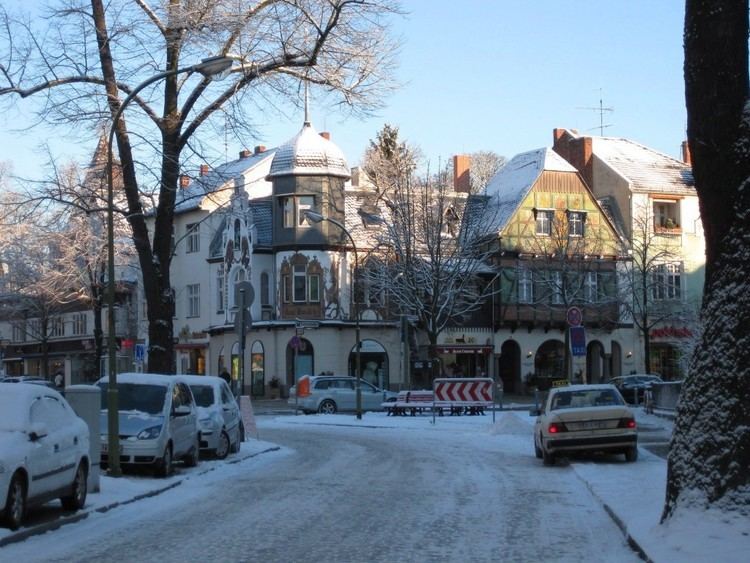Elevation 50 m (160 ft) Area 18.2 km² | State Berlin Founded 1300 Time zone CET/CEST (UTC+1/+2) | |
 | ||
Lichterfelde is a locality in the borough of Steglitz-Zehlendorf in Berlin, Germany. Until 2001 it was part, with Steglitz and Lankwitz of the former Steglitz borough.
Contents
Map of Lichterfelde, Berlin, Germany
History
The Prussian village Lichtervelde was founded in the 13th century by Flemish settlers. It saw considerable growth in the 19th century when the two Villenkolonien of Lichterfelde West and Lichterfelde-Ost were founded: two elegant settlements for wealthy Berliners made up completely of villas or mansion houses. The settlements and the historical villages of Lichterfelde and Giesensdorf were united in 1880 under the name of Groß-Lichterfelde (Greater-Lichterfelde).
Lichterfelde was chosen as the seat of the Prussian Main Military academy (Hauptkadettenanstalt) in 1882, and the district became home to many famous German noble families that were linked to the Prussian Army. The world's first electrified streetcar line operated between Lichterfelde-Ost Railway Station and the Hauptkadettenanstalt in 1881.
In 1920 Lichterfelde became part of Greater Berlin. Between 1920 and 1933, the former military academy in Lichterfelde was used by the Berlin Police. From 1933 to 1945, the grounds of the military academy were the home of the SS Leibstandarte Adolf Hitler. During this same period, the Kreisauer Kreis resistance group around Count Peter Yorck von Wartenburg and Helmuth James Graf von Moltke held its secret meetings in Wartenburg's apartment on Hortensienstraße 50, Lichterfelde-West, during the Third Reich. Generaloberst Ludwig Beck had his house on Goethestraße 24 in Lichterfelde-Ost.
From 1945 to 1994 the Hauptkadettenanstalt was used as "Andrews Barracks" by the United States Army Berlin Brigade. Today it belongs to the German Federal Archives (Bundesarchiv), headquartered in Koblenz. Two other kasernes "Roosevelt Barracks" in Gardeschützen-Kaserne (former seat of the Prussian Guards Rifles Battalion) and "McNair Barracks", a former Telefunken manufacturing plant on Goerzallee were nearby.
While Lichterfelde-Ost was badly hit in parts by World War II, Lichterfelde-West is still largely intact and today one of the prime residential areas of Berlin. The Lichterfelde locality also houses the Berlin-Dahlem Botanical Garden and Botanical Museum and the Campus Benjamin Franklin, built in 1968 and today part of the Charité university hospital.
